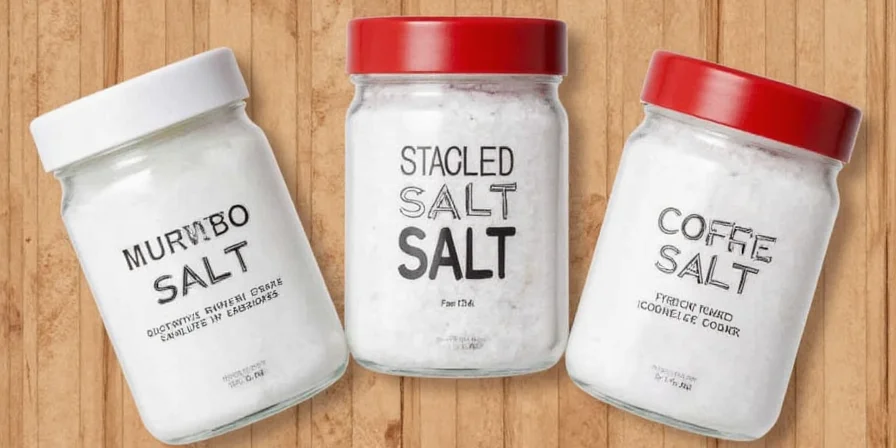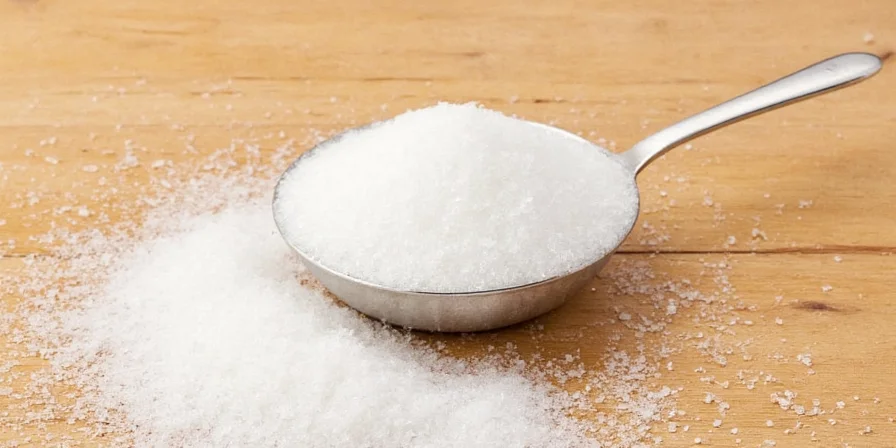The Secret Ingredient in Your Pantry: How to Store and Use Curing Salt Like a Pro

Curing salt—also known as pink salt or sodium nitrite—might not be the most glamorous spice in your kitchen, but it's one of the most powerful. Used for centuries in the preservation of meats, it's a staple in the world of charcuterie, curing, and even some savory dishes. If you've ever wondered why cured meats stay so fresh for so long, or how you can bring that same depth of flavor to your own cooking, you're in the right place. In this blog, we’ll dive into the world of curing salt, explore how to store it properly, and share some clever tips on how to use it like a pro in your kitchen.
What Exactly is Curing Salt?
Curing salt is a mixture of regular table salt and sodium nitrite, a chemical compound that plays a crucial role in the preservation of meat. Sodium nitrite acts as a natural preservative by preventing the growth of harmful bacteria, especially Clostridium botulinum, which causes botulism. It also gives cured meats their characteristic pinkish hue and helps develop that unique, smoky flavor that's hard to replicate with other methods.
There are two main types of curing salt:
- Curing Salt No. 1: Contains about 6.25% sodium nitrite and 93.75% sodium chloride. This is the most commonly used type for cured meats like bacon, sausages, and ham.
- Curing Salt No. 2: Contains about 1.25% sodium nitrite and 98.75% sodium chloride. This is used for longer curing processes and is less common in home kitchens.
While both types are effective, Curing Salt No. 1 is the go-to for most home cooks and small-scale butchers. It’s important to note that curing salt is not the same as regular table salt, and substituting it can lead to serious health risks or spoilage of your food. Always use it with care and follow proper guidelines.
Why Curing Salt is a Kitchen Essential
Curing salt is more than just a preservative—it’s a flavor enhancer. It helps draw out moisture from the meat, which is essential for the curing process. It also contributes to the development of a firm texture and a deep, savory flavor that’s hard to achieve with other methods. Whether you're making your own bacon, curing fish, or even experimenting with plant-based meats, curing salt is a must-have ingredient in your culinary arsenal.
Some of the most popular uses of curing salt include:
- Bacon: Curing salt is used to preserve the pork belly and give it that classic salty, smoky flavor.
- Sausages: It’s used in the preparation of dry sausages like salami and chorizo to prevent spoilage and enhance flavor.
- Fish Curing: Curing salt is commonly used in the preservation of fish, especially in traditional methods like gravlax and kippering.
- Meat Loaf and Pates: It can also be used in smaller quantities to enhance flavor and preserve texture in certain meat-based dishes.
Proper Storage of Curing Salt: Keep It Safe and Effective
Proper storage is essential when it comes to curing salt. Because it contains sodium nitrite, it's important to keep it in a secure, airtight container that's out of reach of children and pets. Here are some best practices for storing curing salt:
Tips for Storing Curing Salt
- Use an airtight container: This is the most important step. Curing salt should never be left exposed to air or moisture, as this can lead to clumping and loss of potency.
- Label it clearly: Always label the container with the name of the product and the date it was opened. This helps you track its shelf life and ensures you're using it before it loses its effectiveness.
- Store in a cool, dark place: Curing salt should be kept in a place that's not exposed to direct sunlight or heat. A pantry or cabinet is ideal.
- Avoid moisture: Curing salt can absorb moisture from the air, which can lead to clumping and even bacterial growth. Make sure the container is completely dry before adding the salt.
- Keep it separate from other spices: Curing salt should never be stored with other spices or salts, as it can contaminate them and cause unintended reactions in recipes.
Remember, curing salt is not a regular seasoning—it’s a powerful preservative. It should always be treated with caution and stored properly to ensure it remains effective and safe for use.
How to Use Curing Salt Safely and Effectively
Now that you know how to store curing salt, let's talk about how to use it in your cooking. Whether you're a beginner or an experienced food preservationist, here are some tips and tricks to help you use curing salt like a pro.
Measuring Curing Salt: The Art of Precision
Curing salt is not something you can just guess with. It’s important to measure it accurately, as too little can lead to spoilage, and too much can be dangerous. A general rule of thumb is to use about 1.25–2.5% of the weight of the meat. For example, if you’re curing 1 kg of pork belly, you would use between 12.5 and 25 grams of curing salt.
Here’s a quick reference table to help you determine the right amount of curing salt for different types of meat:
| Meat Type | Curing Salt Percentage | Example (1 kg Meat) |
|---|---|---|
| Bacon | 2.5% | 25 grams |
| Sausage | 1.25% | 12.5 grams |
| Ham | 1.5% | 15 grams |
| Salami | 1.25% | 12.5 grams |
| Fish | 1–2% | 10–20 grams |
Always use a kitchen scale for accuracy. Measuring by volume (cups or tablespoons) can be misleading, as the density of curing salt is different from regular table salt.
Steps for Curing Meat at Home
Here’s a simple guide to curing meat at home using curing salt:
- Choose your meat: Select high-quality cuts of meat that are suitable for curing, such as pork belly, pork shoulder, or fish.
- Prepare the meat: Trim any excess fat and cut the meat into manageable pieces. Make sure it's clean and dry before curing.
- Mix the cure: Combine the curing salt with any other desired ingredients, such as sugar, spices, or herbs.
- Coat the meat: Evenly coat the meat with the curing mixture, making sure it's fully covered.
- Refrigerate: Place the meat in a sealed container or curing bag and refrigerate it for the recommended period of time (usually 3–7 days, depending on the type of meat and desired flavor).
- Smoke or cook: After the curing process is complete, you can either smoke the meat for added flavor or cook it immediately, depending on your preference.
Remember, the curing process is a delicate balance of time, temperature, and salt. Too much salt can make the meat inedible, while too little can lead to bacterial growth. Always follow safety guidelines and never skip the refrigeration step.
Curing Salt Hacks: Tips and Tricks for the Savvy Cook
Now that you know the basics of using and storing curing salt, let’s dive into some of our favorite hacks and tips that can help you get the most out of this powerful ingredient in your kitchen.
1. Use a Curing Salt Substitute for Non-Curing Purposes
If you're not planning to use curing salt for meat preservation, it's important to know that you should never use it as a substitute for regular salt in cooking. Curing salt contains sodium nitrite, which is not safe for consumption in large quantities. Instead, use regular table salt or sea salt for everyday cooking.
2. Keep a Small Amount on Hand for Flavor Boosts
If you're not curing meat, you can still use curing salt in small amounts to enhance the flavor of certain dishes. A pinch of curing salt can add a subtle, savory depth to gravies, soups, and even some baked goods. Just be sure to use it sparingly and never in large quantities.
3. Store Curing Salt in a Separate Drawer or Cabinet
As we mentioned earlier, curing salt should be stored separately from other spices and salts. This helps prevent cross-contamination and ensures that it remains effective for its intended use. Consider keeping it in a dedicated drawer or cabinet, away from the reach of children and pets.
4. Always Use a Scale for Measuring
As we said before, curing salt should never be measured by volume. Always use a kitchen scale to ensure that you're using the correct amount. A small miscalculation can lead to serious consequences, so it's better to be safe than sorry.
5. Don't Over-Cure
While curing salt is essential for the preservation of meat, it's important not to over-cure. Too much curing salt can make the meat overly salty and tough. Always follow the recommended curing times and salt percentages for each type of meat.
Curing Salt vs. Regular Salt: What’s the Difference?
If you're new to the world of curing salt, you might be wondering how it's different from regular table salt. Here's a quick breakdown of the key differences:
| Characteristic | Curing Salt | Regular Salt |
|---|---|---|
| Composition | Mix of sodium chloride and sodium nitrite | Pure sodium chloride |
| Purpose | Preservation and flavor enhancement | General seasoning and flavor enhancement |
| Color | Pinkish hue | White |
| Safety | Must be used with caution and proper guidelines | Generally safe for consumption in large quantities |
| Usage | Used in curing, smoking, and preserving meats | Used in everyday cooking and baking |
As you can see, curing salt is a specialized product that's not meant for everyday use. It’s best reserved for specific culinary applications where its preservative and flavor-enhancing properties are needed.
Curing Salt in the Modern Kitchen: A Culinary Trend
While curing salt has been used for centuries, it's experiencing a resurgence in the modern kitchen. With the rise of the charcuterie movement and the growing interest in home food preservation, more and more people are experimenting with curing salt in their own kitchens. It's a fascinating trend that allows home cooks to create restaurant-quality cured meats and preserved foods with the right tools and techniques.
Whether you're making your own bacon, curing fish, or experimenting with new flavors, curing salt is a powerful ingredient that can elevate your cooking to the next level. Just remember to use it safely, store it properly, and always follow the recommended guidelines for curing and preserving meat.
Final Thoughts: Curing Salt is More Than Just a Spice
Curing salt is a unique and powerful ingredient that plays an important role in the world of food preservation and flavor enhancement. While it's not something you'll use every day, it's a valuable addition to any kitchen that's serious about curing, smoking, or preserving meats. With the right storage, usage, and safety precautions, you can harness the full potential of curing salt and create delicious, long-lasting foods that are sure to impress.
So, next time you're in the pantry, take a look at that pinkish salt and remember: it's not just a spice—it's a secret ingredient that can transform the way you cook and preserve food. With a little knowledge and a few simple tips, you can master the art of curing salt and elevate your cooking to new heights.

Happy curing, and may your kitchen always be filled with the rich, savory flavors of well-preserved foods!










 浙公网安备
33010002000092号
浙公网安备
33010002000092号 浙B2-20120091-4
浙B2-20120091-4